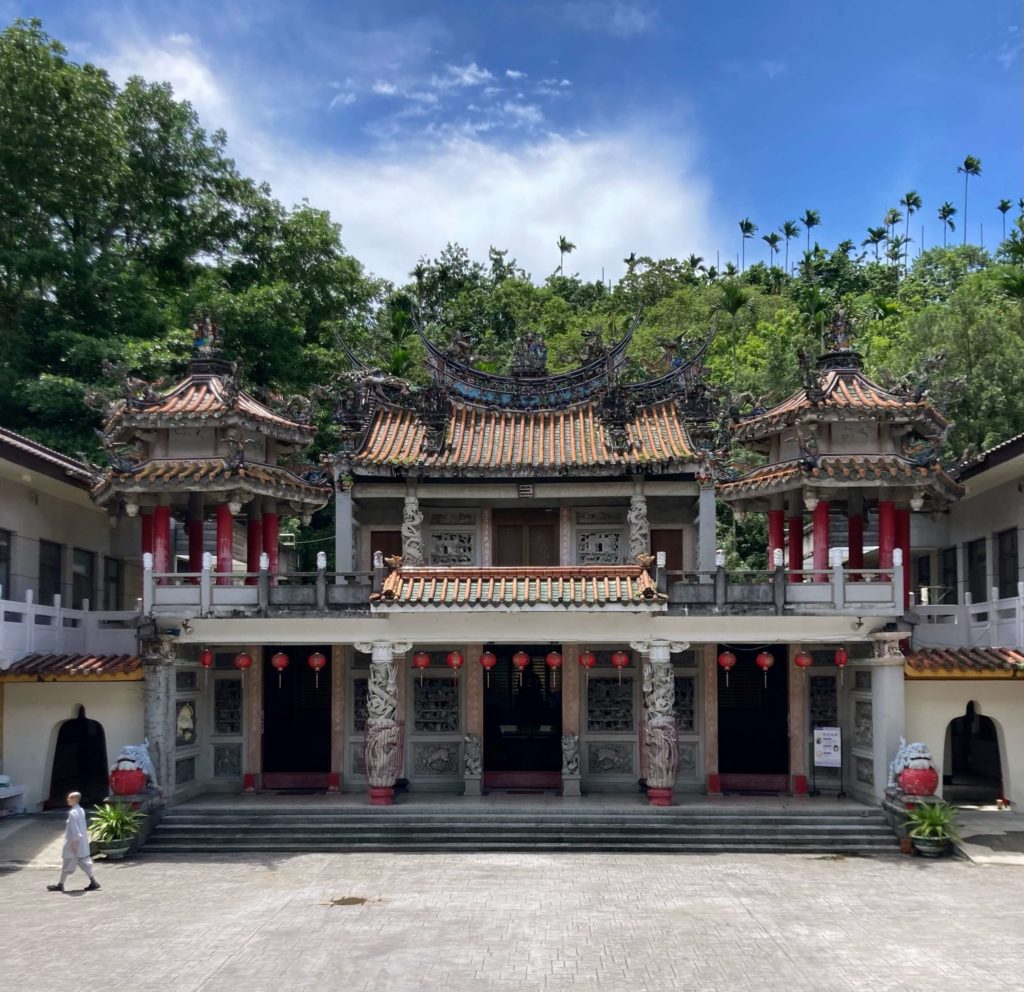
A PhD candidate at Stanford University, Nancy Chu’s (2015) research has brought her to reside among the Luminary order of Buddhist nuns at Xiang Guang Temple in Taiwan. Previously Associate Editor of Lion’s Roar, a Buddhist magazine, Nancy’s connection to Buddhism dates back to her childhood. Here Nancy conjures a tranquil scene of her experience of conducting ethnographic research at the temple.
Taiwan is a self-governing island 110 miles off the coast of China. It is a peaceful, democratic, stable society with a relatively high ranking on the UN’s list of ‘Happiest Countries in the World’ (this year, between the UK and France). Most of my family is Taiwanese, although I was born and raised in the US. It is a lovely island, with incredible mountains, hot summers and delicious food.
I am doing my dissertation fieldwork here for my PhD in Religious Studies. I am staying at a Buddhist organisation outside the city of Chiayi called Xiang Guang (Incense Light) Temple, home to the Luminary order of Buddhist nuns. The temple is surrounded by mountains, sitting at the foot of the Central Mountain Range, which cuts across Taiwan. In the summer, it rains nearly every day. Mornings in the kitchen are bustling. Novice nuns in blue aprons wash and chop vegetables in preparation for the next meal. In the old temple at the back of the community is a statue of Guanyin, the bodhisattva of compassion.

My connection to Buddhism is rather unique. When I was young, my father left his job with the Taiwanese foreign service to join a Buddhist community in California, called the City of Ten Thousand Buddhas. I grew up there and Buddhist nuns were my role models. Small wonder then that I have found my way back to studying Buddhist nuns for my PhD. Many of the nuns I have met are inspiring people. They have a simple, structured way of life, reducing their needs and material consumption to a minimum. They follow an ethical rule.

I have a longstanding relationship with this group of Taiwanese Buddhist nuns. I first came to Xiang Guang Temple in 2013, when I was an MDiv student in Buddhism at Harvard Divinity School. I returned during my MPhil in Social Anthropology at Cambridge and they became the topic of my thesis. Now, as a PhD student at Stanford, I have come back once more. The focus of my ethnographic research is how Buddhist nuns cultivate resilience to physical pain through practices of ignoring the body.
My days here follow the nuns’ schedule. I rise early, do community work and conduct interviews with the nuns. The nuns I’ve spoken to so far tend to agree that monastic life makes them better equipped to cope with physical pain. Buddhist monastic training is about reversing one’s normal habitual desires, comforts and pleasures, and learning to be comfortable with accepting the way things are. They wear loose robes that hide the body and shave their heads. Many monastic practices are about denying vanity. Instead, the focus is on cultivating the spirit. So, when facing physical pain, Buddhist monastics tend to be better at accepting or bearing it with equanimity, because they have been learning to refocus attention away from their bodies.
Following my time with the nuns, I plan to do some additional fieldwork with a Buddhist end-of-life care organisation called Da Bei Xue Yuan (Great Compassion Academy) in Taipei. They teach people how to provide spiritual and emotional support to those who are dying. Looking ahead, I’m excited to see where this research will take me. For now though I am enjoying spending time in Taiwan and immersing myself in the field, where I am exposed to different ideas and learn something new every day.
Written by
Nancy is a PhD candidate at Stanford University and her research focusses on how Buddhist nuns cultivate resilience to physical pain through practices of ignoring the body. She has also worked as Associate Editor of Lion’s Roar Buddhist magazine.






